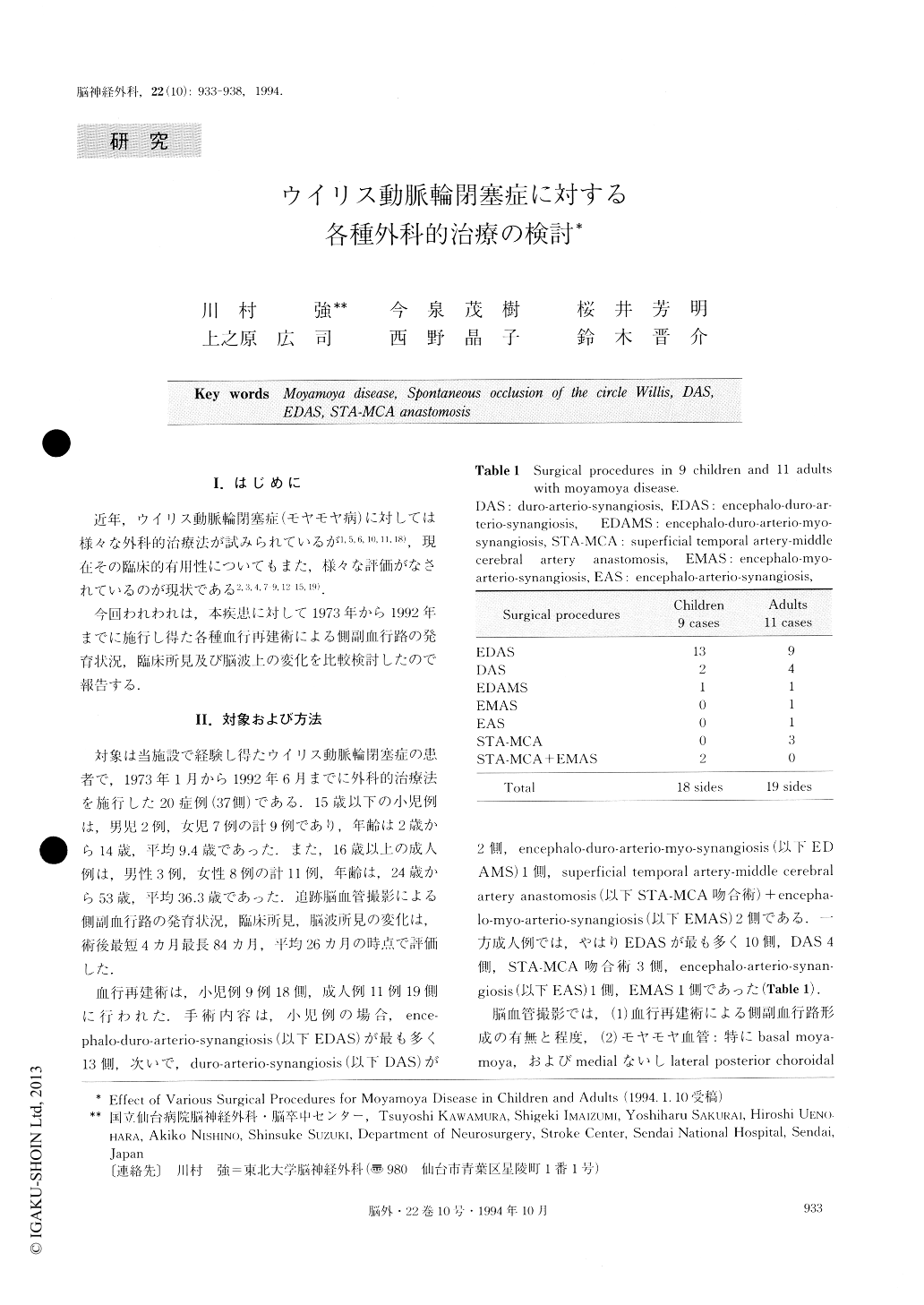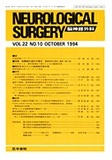Japanese
English
- 有料閲覧
- Abstract 文献概要
- 1ページ目 Look Inside
I.はじめに
近年,ウイリス動脈輪閉塞症(モヤモヤ病)に対しては様々な外科的治療法が試みられているが1,5,6,10,11,18),現在その臨床的有用性についてもまた,様々な評価がなされているのが現状である2,3,4,7-9,12-15,19).
今回われわれは,本疾患に対して1973年から1992年までに施行し得た各種血行再建術による側副血行路の発育状況,臨床所見及び脳波上の変化を比較検討したので報告する.
We reviewed our various surgical procedures for moyamoya disease to clarify which treatment is better to relieve the patients with moyamoya disease. We re-viewed follow-up angiography, clinical manifestation and EEG. Twenty (5 males and 15 females) patients with moyamoya disease were admitted to our hospital during the period from 1973 to 1991. A child group (under 15 yrs.) consisted of 9 patients: 18 hemispheres underwent, 2 DAS, 13 EDAS, 1 EDAMS, 2 STA-MCA anastomosis+EMAS. In the adult group, there were 11 patients: 19 hemispheres underwent, 4 DAS, 10 EAD-S, 3 STA-MCA anastomosis, 1 EAS, 1 EMAS. Thirty-seven operations were performed totally on these sub-jects and they were studied by follow-up angiography. In the child group, both of direct (STA-MCA+ EMAS) and indirect EDAS group (EDAS, EDAMS) procedures for revascularization showed favorable col-lateral formation postoperatively. DAS was inferior to EDAS in the formation of collateral channels. This may be clue to the significance of contact between the STA band and the brain surface. In the adult group, only 2 DAS, 2 EDAS, 1 EDAMS, 2 STA-MCA, 1 EMAS showed favorable results. Formation of collateral chan-nels in adults was inferior to that in children.

Copyright © 1994, Igaku-Shoin Ltd. All rights reserved.


